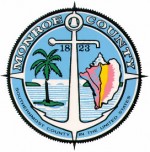DID YOU KNOW: IT IS A VIOLATION OF MONROE COUNTY CODE TO THROW GARBAGE INTO MONROE COUNTY CANALS, INCLUDING FISH AND LOBSTER CARCASSES
MONROE COUNTY, FL – Monroe County Code prohibits the practice of throwing debris and garbage, including fish and lobster carcasses, into canals. Section 21-21(b) prohibits throwing, placing, and depositing garbage in canals, among other places.
Section 21-21(b) reads: No person shall throw, place or deposit or cause to be thrown, placed or deposited, any solid waste, special waste, sludge, trash, junk, abandoned vehicle, abandoned vessel, garbage, or filth of any kind into or on any of the public streets, roads, highways, bridges, alleys, lanes, thoroughfares, waters, canals or vacant lots, or upon the premises of any other person within the limits of the county.
Additionally, Section 118-12(d) of the Land Development Code prohibits fish cleaning tables that directly discharge into surface waters, which includes canal waters.
Why is it bad? The odor associated with floating carcasses in the water is bad enough, but other issues include attracting wildlife like sharks to residential canals where people or pets may swim, or pelicans that can be harmed when eating the carcasses. Another serious problem is that discarded carcasses use dissolved oxygen to decay, and lower dissolved oxygen levels in canals can harm the overall health and ecosystem in the canal. Lower dissolved oxygen levels can lead to methane build-up or the “rotten egg” smell that can happen in unhealthy canals.
What should be done with the carcass? Be a good neighbor. The preferred disposal method is through the County’s garbage vendors, who pick up garbage twice a week. To contain the smell, local charter fishermen suggest putting the scraps into a trash bag and sealing it tight for proper disposal during trash pick-up. Scraps can also be placed in bags and frozen until the next trash pick-up or used as chum or bait on subsequent boat trips offshore.
Monroe County recognizes that enforcement is challenging because violations must be witnessed firsthand by a person authorized to enforce the ordinance, such as a law enforcement or code enforcement officer. A citation can’t be issued without an officer eye-witnessing the violation (even if cell phone video footage exists). Let’s all do our part to maintain our canals and waterways by not throwing scraps or carcasses into the canals.
[livemarket market_name="KONK Life LiveMarket" limit=3 category=“” show_signup=0 show_more=0]



No Comment